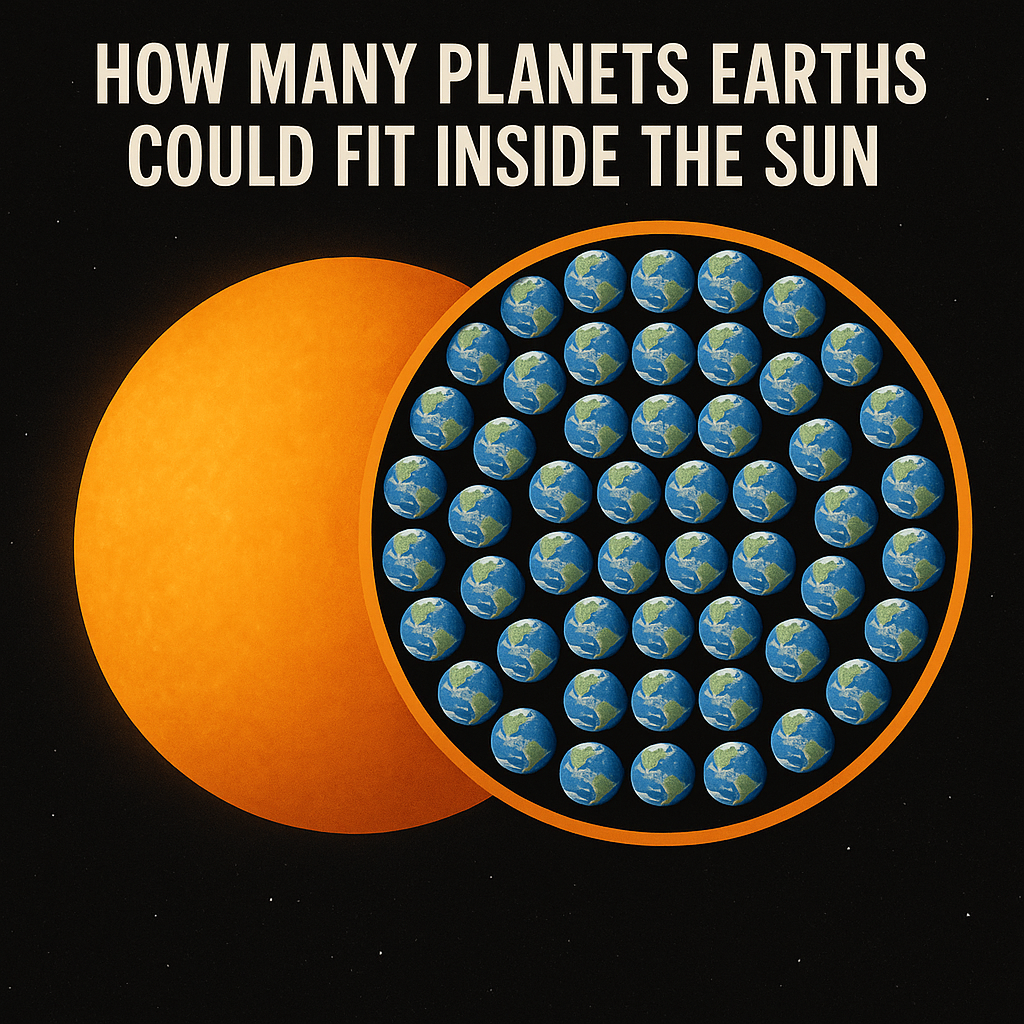
How Many Planets Earths Could Fit Inside the Sun
How Many Planets Earths Could Fit Inside the Sun
Have you ever looked up at the Sun and wondered, how many planets earths could fit inside the sun? The short answer: around **1.3 million Earths**. That’s a massive number, and it perfectly illustrates the astonishing scale of our solar system’s central star. Let’s break this number down and understand how scientists came to this conclusion.
Table of Contents
- Sun vs Earth: A Matter of Volume
- Visualizing the Size Difference
- Scientific Calculation Behind the Number
- Why Does This Comparison Matter?
- User Insights and Local Views
- Frequently Asked Questions
Sun vs Earth: A Matter of Volume
The Sun’s volume is approximately 1.41 × 1018 cubic kilometers, while Earth’s volume is about 1.08 × 1012 cubic kilometers. If you divide the Sun’s volume by Earth’s, you get the answer to **how many planets earths could fit inside the sun**—which is roughly 1.3 million Earths. That doesn’t mean you could stack Earths in a neat pile—many gaps would exist—but as a theoretical volume calculation, it’s accurate.
Visualizing the Size Difference
To help imagine how many planets earths could fit inside the sun, consider this: If the Sun were a hollow ball, you could pack Earths inside like marbles in a jar—about 1.3 million of them. According to NASA’s solar education resources, if the Sun were the size of a typical beach ball, Earth would be a tiny marble by comparison. Such analogies help contextualize the scale difference.
Scientific Calculation Behind the Number
Scientists use formulas for volume based on radius. The formula for the volume of a sphere is (4/3)πr³. With the Sun’s radius being around 696,340 km and Earth’s radius at about 6,371 km, the math checks out. Experts at [Wikipedia’s Sun article](https://en.wikipedia.org/wiki/Sun) explain these metrics in more technical depth. These calculations affirm the truth behind the phrase: **how many planets earths could fit inside the sun**.
Why Does This Comparison Matter?
Understanding **how many planets earths could fit inside the sun** helps us grasp the sheer scale of the solar system. It offers perspective on why the Sun’s gravitational pull is so dominant, influencing not only Earth’s orbit but the entire array of planets. This comparison is commonly used in astronomy education and public science communication, especially in planetarium shows and science museums like the Adler Planetarium in Chicago.
User Insights and Local Views
We asked readers of Planet Fitness Info in various local regions about their impressions:
- “I thought Earth was big until I saw this fact in a science app at my local library.” —Jordan M., Utah
- “I visited a planetarium near our campus and saw a simulation showing millions of Earths falling into the Sun. Mind blown!” —Kayla S., California
These perspectives add a human layer to the question: how many planets earths could fit inside the sun?
Frequently Asked Questions
Is it physically possible to put 1.3 million Earths inside the Sun?
Not physically. This is a theoretical calculation based on volume, not a packing or engineering possibility. It assumes Earths could be compressed without gaps.
Does this mean the Sun is 1.3 million times heavier?
No. The Sun is about 333,000 times more massive than Earth. The density and composition are different, primarily hydrogen and helium.
Why is the Sun so much bigger than Earth?
The Sun formed from a massive gas cloud, accumulating mass over millions of years. Its size is necessary to produce nuclear fusion, which powers the entire solar system.
How does this knowledge affect astronomy or space travel?
Understanding celestial body sizes helps in spacecraft navigation, mission planning, and studying gravitational effects. It’s a foundational element of space science.
Explore more cosmic comparisons in our Facilities & Amenities section.